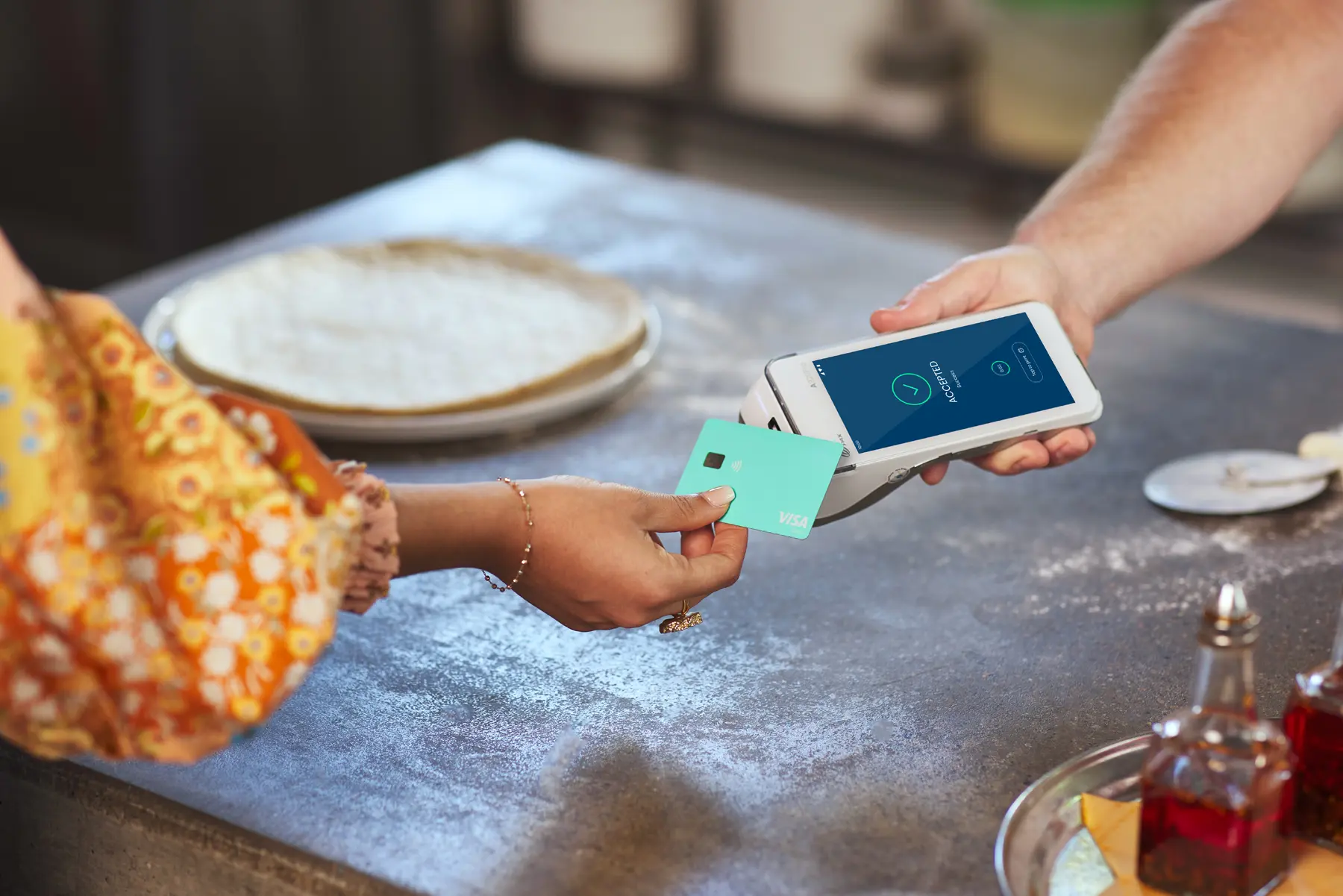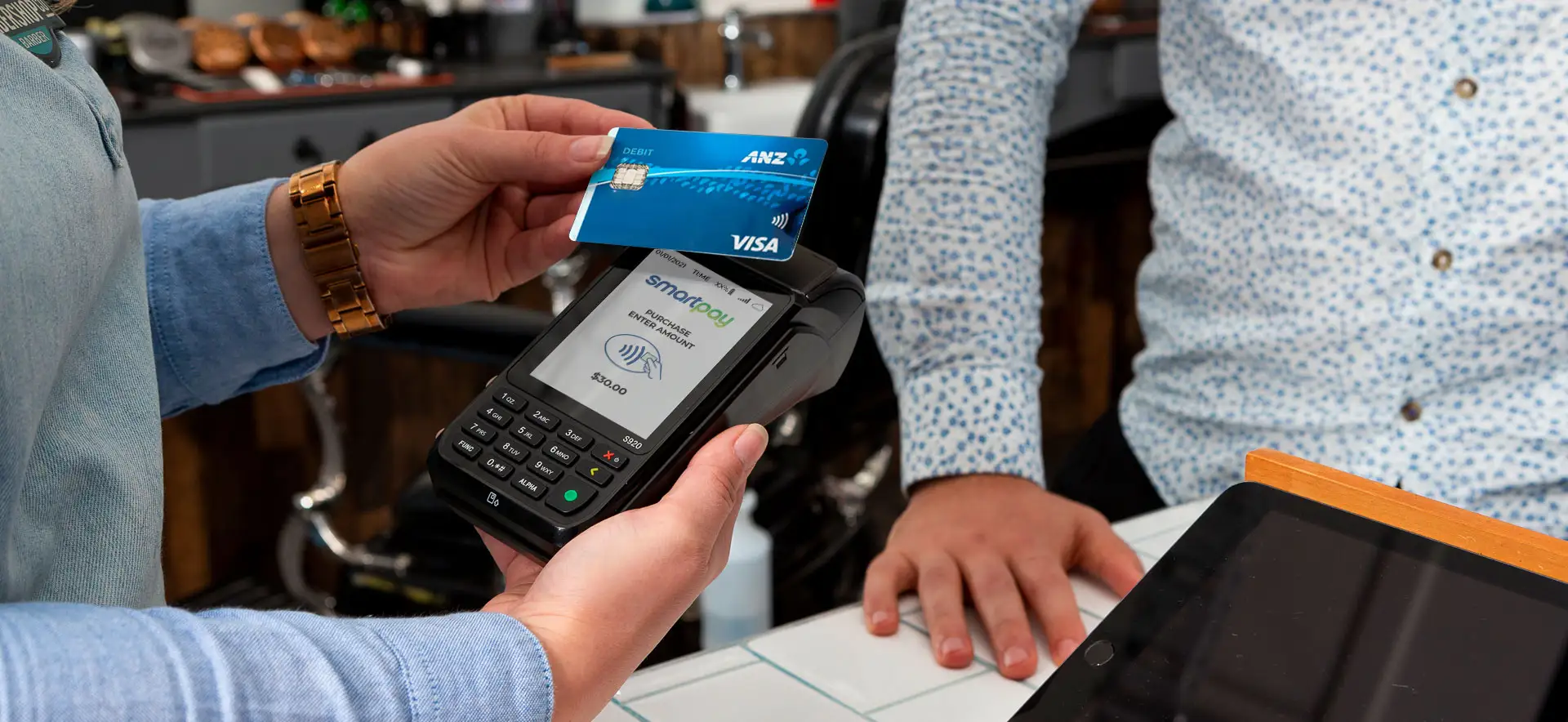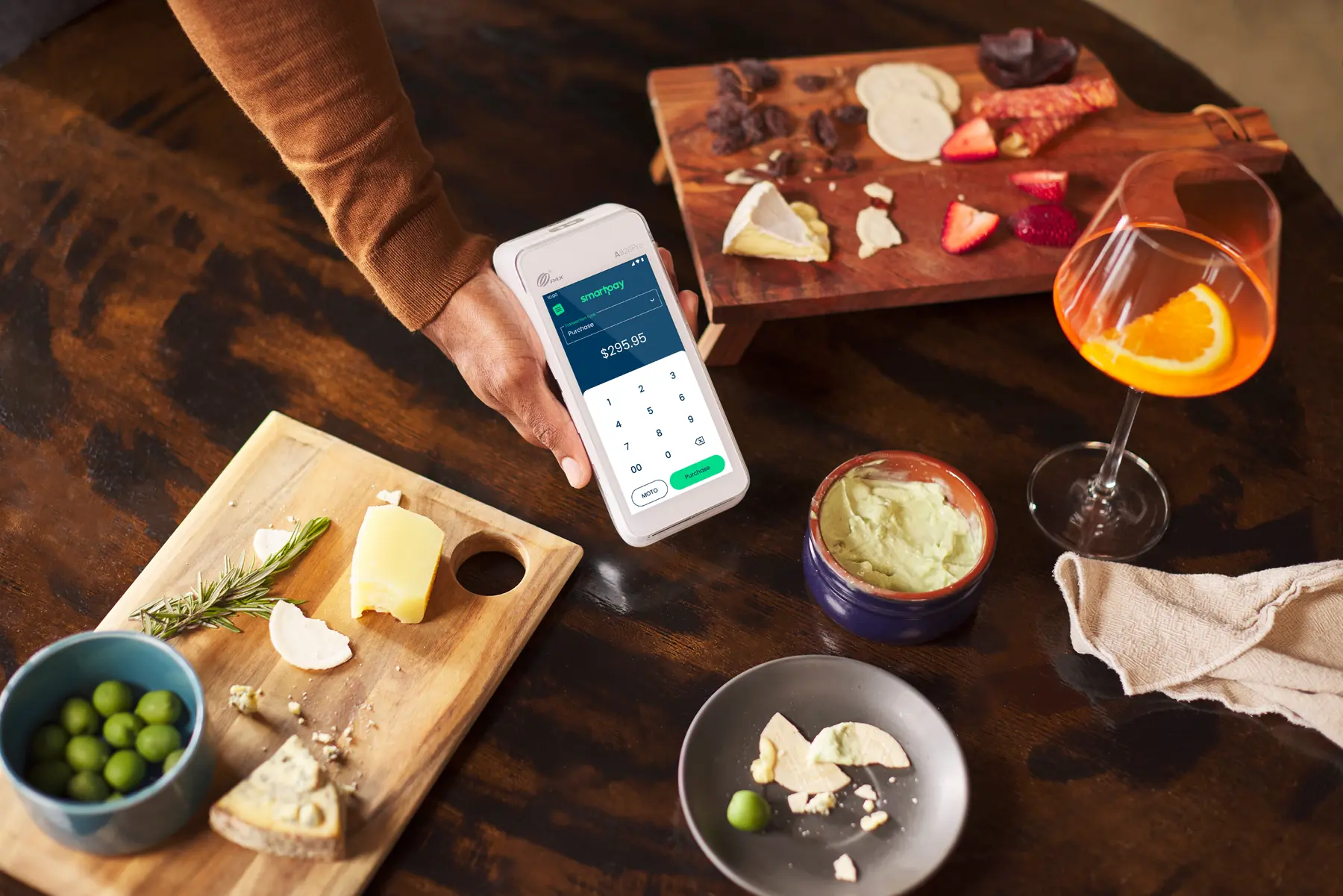
Fast, secure and convenient—contactless payments like payWave are rapidly becoming the norm in New Zealand. In fact, Kiwis are now using contactless twice as much as cash. And as contactless technology advances, this trend is only set to rise!
But what is payWave? How does it work? What can it look like in practice and is it right for your business?
In this guide, we will cover all the basics to help you nail payWave in New Zealand:
- What is payWave?
- How Does payWave Work?
- What is the payWave Limit in NZ?
- What are the payWave Fees for Businesses?
- Understanding payWave Surcharge
- How Your Business Can Tap Into payWave
- Does Your EFTPOS Machine Swipe for payWave?
- Benefits of payWave
- How Safe are Contactless Payments?
payWave—simple, seamless payments with a wave of your hand. Now that’s good business.
What is payWave?
payWave is a type of contactless payment or card “scheme” payment that is facilitated by Visa. It’s also often the colloquial term for “contactless payments” in New Zealand.
This is a secure way for customers to buy products or services using an enabled credit/debit card or mobile device, like a smartphone or smartwatch.
No need to insert or swipe cards, sign receipts or push buttons. For purchases under NZ$200, you don’t even need to enter a PIN! Simply wave a contactless card or device in front of the secure reader at checkout to pay.
Identify the payWave symbol by the wave-like image on the front of a card or terminal:
How Does payWave Work?
payWave works its magic using NFC (Near Field Communication) technology. In non-techie speak, NFC lets two devices near each other securely connect and swap information without physically touching.
For contactless payments, NFC allows your terminal and a customer’s card or device (such as an Apple Watch) to ‘talk’ to each other.
From a customer perspective:
Simply wave your contactless card or device within 40mm of the contactless card reader to make a purchase. Then, an embedded computer chip in the payWave-enabled card sends information to a secure reader at the Point of Sale.
The devices swap payment details and voila! The customer sends funds and your business accepts it—a successful transaction.
From a business perspective:
Behind the scenes, contactless transactions like payWave work differently from EFTPOS because they are processed through card scheme payments like Visa and Mastercard. Visa facilitates payWave.
Data ping pongs between the card issuer (your customer’s bank), the card scheme (Visa) and the acquirer so the funds can be correctly transferred to your account.
Your terminal then identifies this type of transaction and communicates with your bank, letting you and your customer know whether the transaction has been accepted.
What is the payWave Limit in NZ?
In New Zealand, the current payWave limit is NZ$200. Save time with purchases for $200 or less at a Visa payWave (transaction limits may vary for overseas merchants). No need to swipe, insert, sign or enter a PIN—how easy!
For purchases over $200, your terminal will prompt customers to enter their PIN to complete the transaction. This transaction is still processed as a contactless payment from a merchant perspective.
What are the payWave Fees for Businesses?
Keen to accept payWave in NZ? Here’s the low down on fees to get your customers tapping away.
Card schemes like Visa provide service and security measures, including added protection against fraud and loss.
Due to this, payWave does have an additional cost per transaction called a MSF (Merchant Service Fee) that allows you to accept and process contactless payments. This is paid by you, the merchant, to your acquirer, which is often a bank in New Zealand (but if you’re a Smartpay Low Cost Tap & Pay customer—that’s us!).
The exact dollar amount for your fees largely depends on the rate locked in with your acquirer i.e. your MSF package. This rate is based on:
- The nature of your business
- Volume of transactions
- Types of cards processed
For example, a souvenir shop accepting international cards from tourists can vary a lot from a busy cafe accepting contactless payments from office crowds.
Acquirers (again, that can be banks but also payment experts—like Smartpay with Low Cost Tap & Pay!) offer MSF packages with rates such as:
- Blended rates
- Interchange plus rates
- Fixed rates
These rates consist of “interchange fees” and “acquiring fees.” These fees cover services including handling costs and risks associated with processing payments e.g. fraudulent transactions and bad debt.
Get in touch with your acquirer to confirm the exact rate for your unique business. This will paint a clearer picture of your payment solution and help fine-tune your setup.
Understanding payWave Surcharge
Keen to cover some or all of the cost of accepting payWave for your business? A surcharge is a small fee that a merchant can legally add to a certain payment transaction to cover the cost of acceptance.
This is simply done by setting up the surcharging feature on your terminal with your provider. Once set up, your terminal will pass on the applicable fee to the customer.
With Smartpay Long Term Rentals, we can help set this up on your S920 terminal to cover some or all of the cost of acceptance of contactless and credit card transactions.
With Smartpay Low Cost Tap & Pay, savings is even easier to unlock. We provide a competitively low rate for Visa & Mastercard contactless credit and debit transactions, and free terminal rental (minimum turnover and T&Cs apply), meaning your business is set up to save without needing surcharging! Ask us how.
In practice, to apply a surcharge, enter the transaction amount into the terminal as usual. When the customer taps their card or device, the terminal automatically applies the contactless surcharge to the customer.It’s easy and hassle-free—no need to manually calculate the amount for each transaction when your terminal can do the heavy lifting for you!
How Your Business Can Tap Into payWave
With the rise in popularity of contactless technology, nearly 40% of Kiwis are now choosing to pay with a tap of their card, smartphone or smartwatch.
Visa’s The Merchant Contactless Study shows that business accepting contactless payments experience at least double the growth rates compared to non-contactless merchants in:
- Sales
- Transactions
- New customers
- Customer loyalty
Customers are more likely to return when you accommodate preferences. And this is how customers want to pay! The Visa Back to Business Study, reported two thirds (65%) of surveyed consumers say they would prefer to pay with a contactless method. Future-proof your business by offering payment methods that your customers prefer, such as a Visa payWave card!
Does Your Terminal Swipe for payWave?
Setting up payWave for your business is relatively simple. Your existing terminal may already have this functionality.
Firstly, a contactless-enabled EFTPOS terminal (like our Smartpay Android terminal) will have an NFC reader that accepts contactless transactions such as payWave.
Check whether your payment terminal is set up to accept contactless payments by:
- Looking for the payWave contactless symbol on the terminal
- Checking directly with your terminal provider
Next, reach out to your acquirer to enable contactless payments. Once activated, you’re all set to go. Here’s a handy tip to remember when activating contactless payments: Negotiate a good MSF (Merchant Service Fees) rate when talking to your acquirer. Always ask if they can offer a better deal!
If you’re already a Smartpay customer, great news. All Smartpay terminals are enabled with built-in contactless functionality.
Benefits of payWave—Seamless Payments You Can Count On
payWave gives businesses the upper hand with multiple benefits that go beyond simple, seamless payments. From shorter lines to quicker payments, stay ahead of the curve with payWave today.
Contactless Convenience
Reduce time spent on operating card machines or counting cash with a simple wave of your customer’s hand. No awkward moments fiddling with money or fussy devices when payWave is on your team.
Streamline Efficiency
With payWave contactless transactions, you can offer a smoother checkout experience and get those lines moving quicker! From your staff to customers, it’s a win-win all around, especially during busy seasons.
Enhance Security
Offer customers invaluable peace of mind with the security of contactless payments. Multi-layered encryption prevents unintentional payments and fraudulent transactions.
Elevate Customer Experience
To take customer experience to the next level, make checkout smooth, quick, and painless. Contactless payments are fast becoming the go-to payment solution in New Zealand. Don’t get stuck behind!
Hands-free Hygiene
Dodge the flu season by keeping transactions contact-free! payWave means that no physical contact is needed for payments (under $200), helping you, your staff and your customers stay in tip-top shape to tap away.
How Safe are Contactless Payments?
Boasting multiple layers of built-in security and encryption technology, you’re in safe hands with contactless payments!
These measures ensure both customer and merchant details are kept secure, whether from an unintentional payment or attempted security breach.
Contactless payment technology protects customers and merchants because it:
- Features built-in encryption: Offers built-in security features that older cards don’t have.
- Encryption: Contactless payments send encrypted data, meaning only authorised parties can see the information. Transactions use unique codes that minimise the risk of fraud by making data difficult to intercept or reuse.
- Less vulnerable to card skimming: Contactless cards never leave your customer’s hand!
- Designed for close proximity only: Makes it incredibly difficult for thieves to scan the card while the terminal reads it.
- Requires PIN for purchases over NZ$200: Adds an extra layer of protection against theft.
- Offers Zero Liability Fraud Protection: Covers both merchants and cardholders for any unauthorised transactions.
So—what are you waiting for? Explore contactless payments for your business today!




